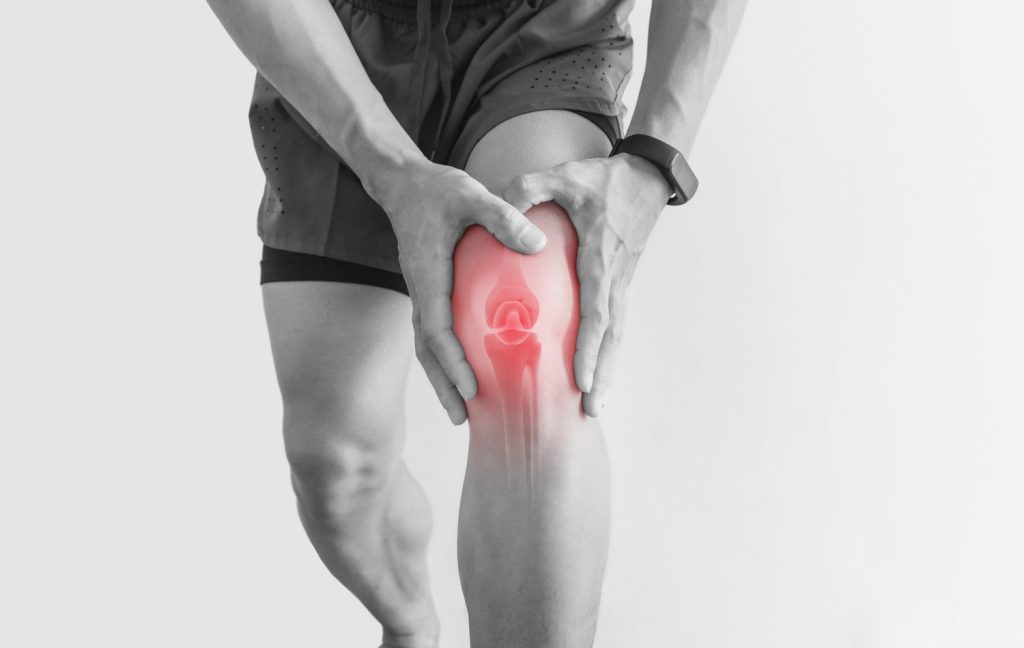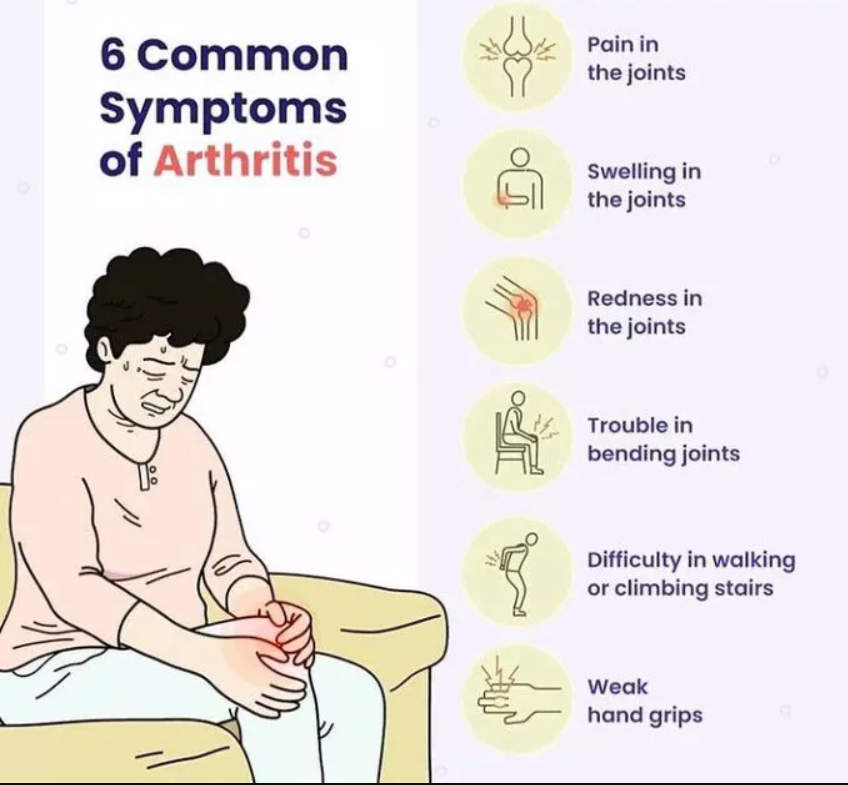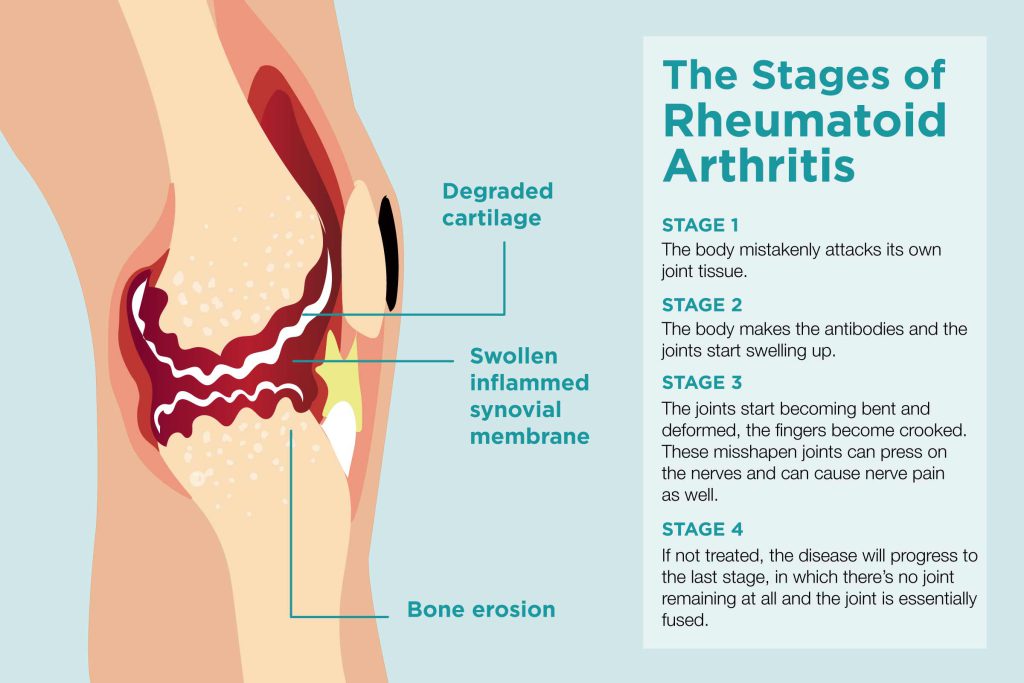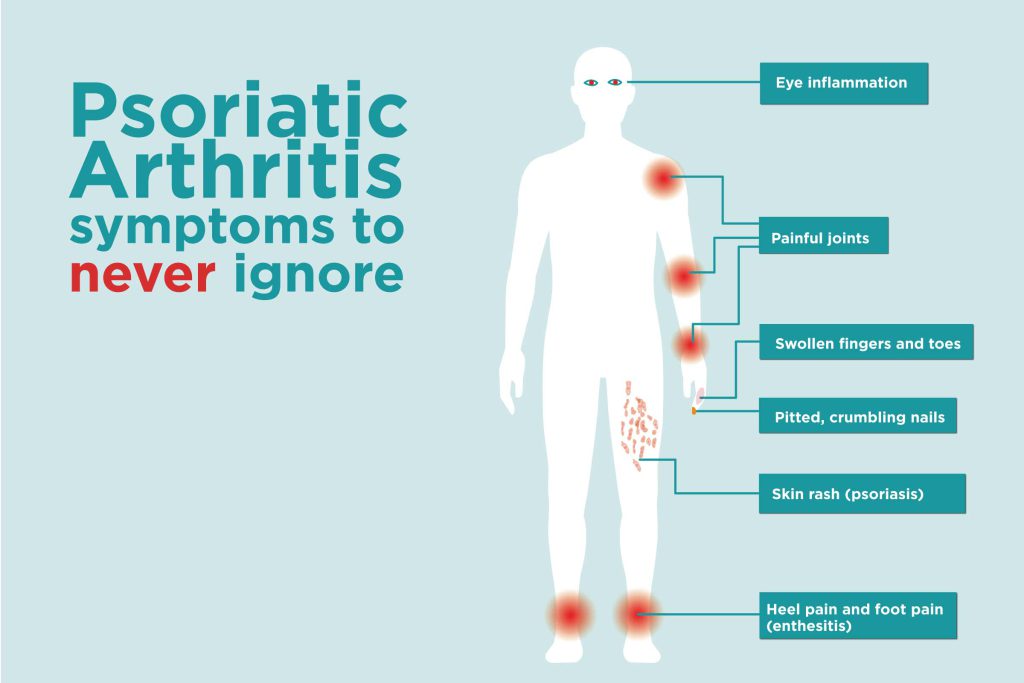
- 1907
- 0
Arthritis – Symptoms you should immediately act on

Picture this: a world where movement is effortless, joints are supple, and pain is but a distant memory. Now, imagine that same world plagued by a condition that turns this picturesque vision into a daily battle. Welcome to the realm of arthritis, where millions of individuals find themselves locked in a struggle against joint inflammation and its relentless grip.
Arthritis, a term encompassing a myriad of conditions, is a complex puzzle waiting to be solved. It affects people across all walks of life, transcending age, gender, and background.
In this blog, we embark on an enlightening journey, shedding light on the enigma that is arthritis and empowering you with knowledge to navigate its challenges.
What is Arthritis?
Arthritis is not a single disease but rather an umbrella term that encompasses more than 100 different conditions affecting the joints, surrounding tissues, and connective tissues throughout the body. The term “arthritis” is derived from “arth,” meaning joints, and “ritis,” meaning inflammation.
Common Symptoms:

The symptoms include joint pain, inflammation, and difficulties with movement or staying active. The severity of these symptoms can vary from mild to severe, with some symptoms remaining stable while others worsen over time. It’s important to note that arthritis can affect not only joints and cartilage but also other organs such as the heart, eyes, lungs, kidneys, and skin.
Permanent joint changes, such as knobby finger joints, can also occur due to arthritis.
Arthritis across different age groups:
Contrary to popular belief, it is not exclusive to older adults. People of all ages, sexes, and races can develop this problem. While some types of them are more prevalent among the elderly, others can affect
children, teenagers, and young adults.
Different Types :
Arthritis encompasses a wide range of conditions, each with distinct symptoms and treatment requirements. Some common types include:
a) Inflammatory Arthritis:
This type affects multiple joints and involves inflammation that can also damage the underlying bone. Examples of inflammatory arthritis include:

i) Rheumatoid Arthritis: An autoimmune disorder where the body’s immune system attacks its own tissues, leading to joint inflammation and potential organ involvement.
It can develop at any age, but the typical onset is between 30 and 50 years.
ii) Reactive Arthritis: Inflammation that occurs in various parts of the body, often within
four weeks of an infection, such as a sexually transmitted infection or a bowel infection. It predominantly affects young adults aged 20 to 40, with men being more susceptible.
iii) Ankylosing Spondylitis: A chronic inflammatory disease primarily affecting the axial
spine, resulting in chronic back pain and spinal stiffness. It is usually diagnosed in
individuals younger than 40, with symptoms often appearing before the age of 30.

iv) Psoriatic Arthritis: Affects individuals with psoriasis, a skin disease characterized by red patches of skin topped with silvery scales. This causes swollen, stiff, and painful joints. It is a long-term condition that can worsen over time.
b) Degenerative or Mechanical Arthritis:
The most common form is degenerative or mechanical arthritis, also known as osteoarthritis. It occurs due to the breakdown of cartilage that covers the ends of bones, leading to joint damage and discomfort. Osteoarthritis is prevalent among individuals aged 55 years and older, with approximately 80% of older adults exhibiting evidence of the condition.
c) Infectious Arthritis:
Also known as septic arthritis. This type involves a painful joint infection that typically originates from another part of the body. Bacteria, viruses, or fungi can cause infectious arthritis, and it usually affects a single joint. Common bacterial culprits include Staphylococcus aureus, Salmonella, and Shigella.
(d) Metabolic arthritis:
Commonly known as gout in which uric acid appears in excessive quantities in the blood and may be deposited in the joints and other tissues Gout can either come and go in episodes or become chronic if uric acid levels are not reduced.

(e) Childhood arthritis:
The most common is juvenile idiopathic arthritis which is also known as juvenile rheumatoid arthritis and causes permanent physical damage to joints. This damage can make it hard for the child to do everyday things.
When is it advisable to seek medical attention?
If you experience unbearable swelling or stiffness that persists for several days, consult a doctor. Early diagnosis and treatment can greatly improve the outcome of arthritis management.
Now, let’s explore the available treatments for arthritis.
The primary goal of treatment is to effectively manage pain, minimize joint damage,
and enhance or maintain your overall function and quality of life.
-
Medication
It plays a crucial role and the specific drugs prescribed depend on the type
of arthritis you have. Commonly used medications include analgesics, nonsteroidal
anti-inflammatory drugs (NSAIDs), counterirritants, disease-modifying antirheumatic
drugs (DMARDs), biologics, and corticosteroids. However, it is important to note that
these medications should never be taken without consulting your physician, as some
of them may have renal toxicity.

-
A healthy and balanced diet:
In addition to medication, natural remedies can provide relief. A healthy and balanced
diet is key, incorporating foods such as fatty fish (rich in Omega-3 fatty acids and vitamin D), nuts and seeds (containing fiber, calcium, magnesium, zinc, Vitamin E, and Omega-3 fats), berries (high in antioxidants), garlic and onions (with anti-inflammatory properties and immune-boosting effects), vegetables (providing vitamins E and C), beans, olive oil (a heart-healthy fat containing oleocanthal), and whole grains that promote joint health and help alleviate inflammation.
Conversely, it is advisable to avoid or limit processed foods, foods with added sugars, and refined carbohydrates as they can exacerbate arthritis inflammation. To know more about diet and nutrition CLICK HERE.
Additionally, smoking and excessive alcohol consumption should be avoided.
-
Exercise and physical therapy:
Engaging in appropriate exercise and physical therapy tailored to your condition can also bring relief. Specific exercises can alleviate symptoms such as pain and swelling, and complementary treatments like ice or hot packs and massages may be beneficial. Joint-friendly activities like walking, swimming, and cycling can provide relief for arthritis and contribute to heart health.
-
Yoga:
Lastly, yoga offers remarkable benefits for managing these symptoms.
Practicing yoga strengthens the muscles around the joints, enhances flexibility, and reduces pain associated with the disease. However, it is important to learn and practice yoga under the guidance of a trained instructor to ensure proper technique and avoid any potential risks.
At Nephrocare India we provide customized Yoga for patient suffering from Arthritis.
You can reach us at : 08069841500
As we reach the end of our journey through the world of arthritis, one thing becomes
abundantly clear: knowledge is indeed power. By unraveling the complexities of this
condition, we have equipped ourselves with the tools necessary to navigate its challenges and reclaim control over our lives.
Arthritis is not merely a battle fought in isolation.
It is a shared experience that connects millions of individuals around the world. Together, we have explored the diverse manifestations of arthritis, from the throbbing pain in our joints to the silent impact on our organs. We have heard the stories of those who have faced this condition with unwavering determination, and we have witnessed the remarkable advancements in medical science that offer hope for a brighter future. But beyond the realm of medical treatments and interventions, we have discovered the transformative power of holistic approaches.
Through timely seeking medical attention, proper nutrition, regular exercise, and the healing practices of yoga and self-care, we can empower ourselves to mitigate pain, reduce inflammation, and enhance our overall well-being.
Comment
Check Your EGFR
***We Promise, no spam!







